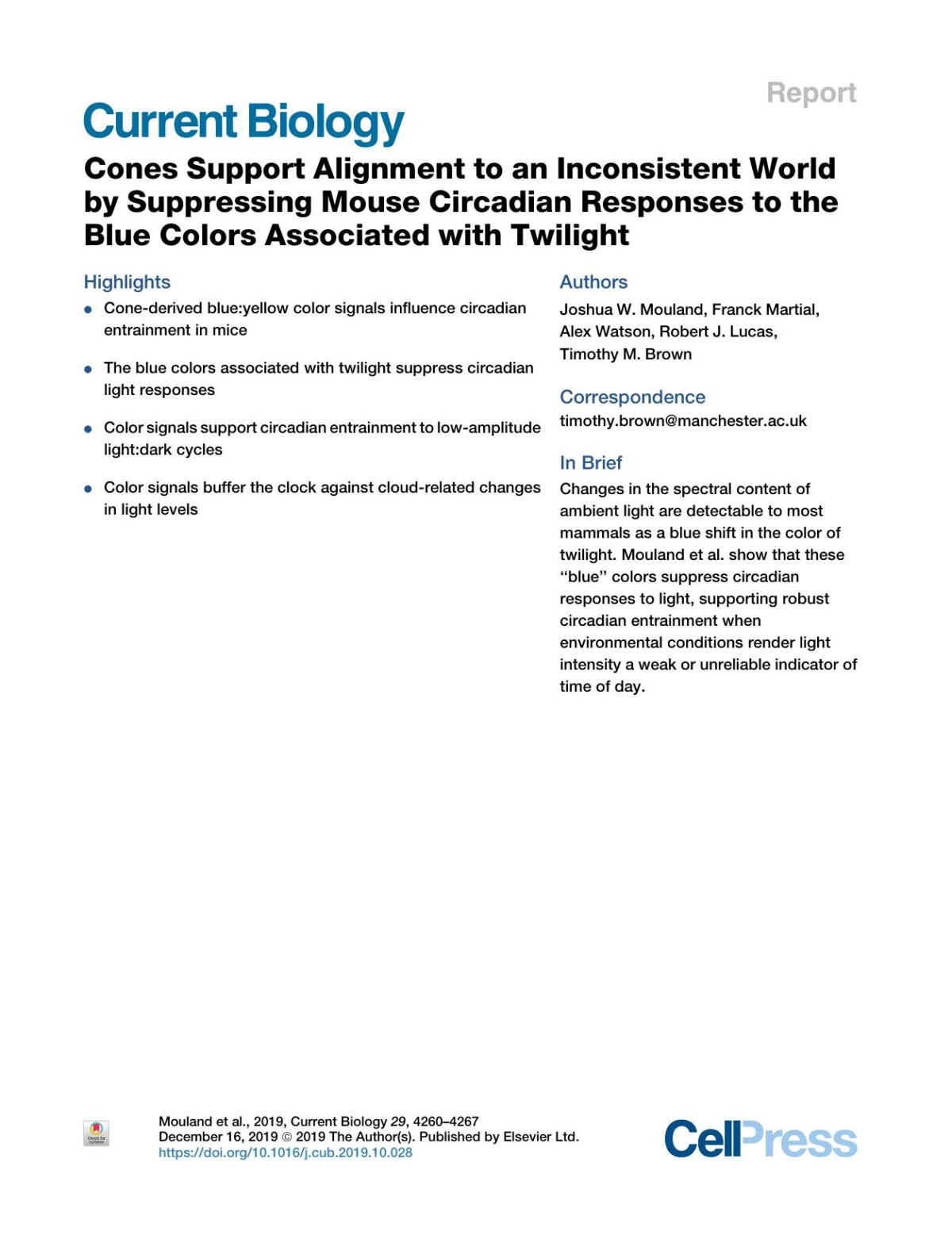Cones Support Alignment to an Inconsistent World by Suppressing Mouse Circadian Responses to the Blue Colors Associated with Twilight Joshua W. Mouland & Franck Martial & Alex Watson & Robert J. Lucas & Timothy M. Brown
$50.00 Original price was: $50.00.$25.00Current price is: $25.00.
Cones Support Alignment to an Inconsistent World by Suppressing Mouse Circadian Responses to the Blue Colors Associated with Twilight Joshua W. Mouland & Franck Martial & Alex Watson & Robert J. Lucas & Timothy M. Brown – Ebook PDF Instant Download/Delivery 
Product details:
- Author: Joshua W Mouland, Franck Martial, Alex Watson, Robert J Lucas, Timothy M Brown
In humans, short-wavelength light evokes larger circadian responses than longer wavelengths [1-3]. This reflects the fact that melanopsin, a key contributor to circadian assessments of light intensity, most efficiently captures photons around 480 nm [4-8] and gives rise to the popular view that “blue” light exerts the strongest effects on the clock. However, in the natural world, there is often no direct correlation between perceived color (as reported by the cone-based visual system) and melanopsin excitation. Accordingly, although the mammalian clock does receive cone-based chromatic signals [9], the influence of color on circadian responses to light remains unclear. Here, we define the nature and functional significance of chromatic influences on the mouse circadian system. Using polychromatic lighting and mice with altered cone spectral sensitivity (Opn1mwR), we generate conditions that differ in color (i.e., ratio of L- to S-cone opsin activation) while providing identical melanopsin and rod activation. When biased toward S-opsin activation (appearing “blue”), these stimuli reliably produce weaker circadian behavioral responses than those favoring L-opsin (“yellow”). This influence of color (which is absent in animals lacking cone phototransduction; Cnga3-/-) aligns with natural changes in spectral composition over twilight, where decreasing solar angle is accompanied by a strong blue shift [9-11]. Accordingly, we find that naturalistic color changes support circadian alignment when environmental conditions render diurnal variations in light intensity weak/ambiguous sources of timing information. Our data thus establish how color contributes to circadian entrainment in mammals and provide important new insight to inform the design of lighting environments that benefit health.
People also search:
heading alignment cone
concentrically aligned
alignment cone
alignment cones
f connector compression
You may also like…
Business & Economics - Small Business
Romance - Contemporary Romance
Jock Seeks Geek: The Holidates Series Book #26 Jill Brashear
Uncategorized
Uncategorized
Hobbies & Games - Martial Arts
Languages - English as a Foreign Language & Reference
Arts - Graphic Arts











